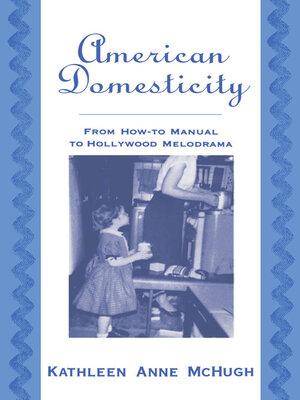
Sign up to save your library
With an OverDrive account, you can save your favorite libraries for at-a-glance information about availability. Find out more about OverDrive accounts.
Find this title in Libby, the library reading app by OverDrive.



Search for a digital library with this title
Title found at these libraries:
| Loading... |
From the cult of domesticity to the Semiotics of the Kitchen, housekeeping has been central to both constructing and critiquing the role of women in American society. Frequently domesticity's style has been to make invisible the labor that produces it, allowing woman to be asserted or argued about in universal terms that downplay race, class, and material relations. American Domesticity considers this relationship in representations of domesticity and domestic labor over the last two centuries in didactic, cinematic, and feminist texts. While the domestic is usually conceived of as the antithesis of the public, economical, and political, Kathleen McHugh demonstrates how domestic discourse established the terms within which the most crucial national issues—the market economy, universal white male suffrage, slavery, the construction of racial difference, consumerism, spectatorship, desire, and even feminism—were conceived, assimilated, and understood. Beginning in the nineteenth century, the book investigates the historical roots of domestic labors invisibility in widely circulated didactic housekeeping manuals written by Lydia Child, Catherine Beecher, Mary Pattison, and Christine Frederick. It then considers how pedagogical discourses became entertainment discourses, their focus shifting from the silent era of film to the twilight of the classical period. The book concludes with an examination of the return of a pedagogical impulse within feminist film production concerning domesticity, comparing it to the concurrent rise of feminist film theory in the academy. Looking at this wide range of print and film texts, McHugh traces the outlines of a discourse of domesticity that claims to be private and universal but instead brokers difference within the public sphere.






